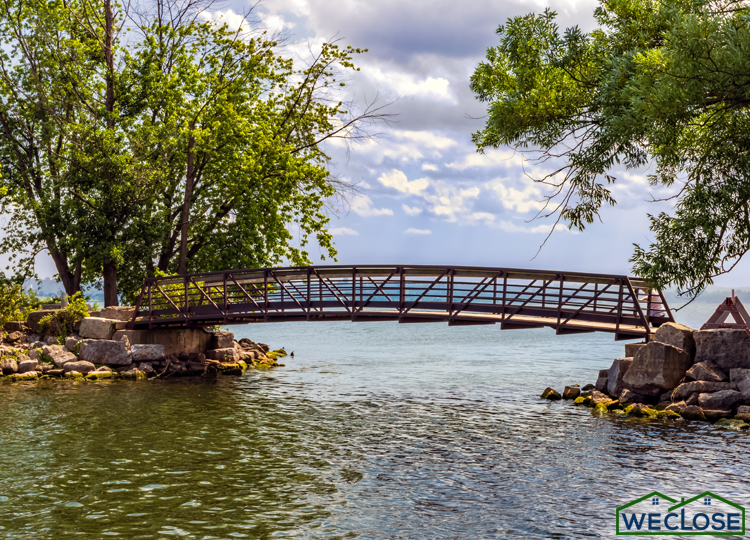Weclose LaSalle Ontario
Are you buying, selling, or refinancing a residential property in LaSalle, Ontario? Your Weclose real estate lawyer LaSalle Ontario helps individuals, corporations, and financial institutions close residential real estate deals. Weclose is dedicated to making the complex task of legal closing simple and cost-effective.
Welcome to LaSalle Ontario
Located just south of Windsor along the scenic Detroit River, LaSalle, Ontario, is a vibrant and growing community that offers the perfect balance of natural beauty and suburban convenience. Known for its commitment to preserving green spaces, LaSalle is home to an extensive network of parks and trails, including the popular LaSalle Trail, which winds through forests, wetlands, and along the waterfront. These trails provide residents and visitors with ample opportunities for walking, cycling, and enjoying the great outdoors, all while being surrounded by the town’s lush natural landscapes. The Vollmer Culture and Recreation Complex, a hub for sports and community events, further enhances the town’s appeal by offering state-of-the-art facilities for fitness, swimming, and other recreational activities.
LaSalle Real Estate Law
The Weclose legal team works with agents, lenders, and brokers in LaSalle. Our real estate lawyer LaSalle have closed deals across Ontario with a focus on customer service and satisfaction. All Weclose deals are closed using experienced lawyers licensed and insured to practice residential real estate law in Ontario.
Fixed-Cost Real Estate Lawyer
Weclose LaSalle real estate lawyers strive to provide fair and predictable fixed-rate pricing for all residential real estate buy, sell, and refinance legal closing services. Enjoy the simplicity and savings of virtual meetings and electronic document signing from your home or office. Use our simple quote form to get a secure and guaranteed instant quote you can rely on emailed to you instantly.
More About LaSalle Ontario
LaSalle’s rich sense of community is evident in its lively events and festivals, which bring together residents of all ages. One of the most anticipated events is the annual LaSalle Strawberry Festival, a beloved tradition that celebrates the town’s agricultural heritage with live entertainment, local vendors, and family-friendly activities. The town’s farmers’ markets, held regularly, offer fresh local produce and handmade goods, reflecting the strong connection between LaSalle’s residents and the surrounding agricultural lands. With its safe, welcoming neighborhoods and top-rated schools, LaSalle Ontario is an ideal place for families looking for a close-knit community atmosphere.
A Blend of Natural Beauty and Community Charm
In addition to its natural and community-focused amenities, LaSalle also benefits from its proximity to both Windsor and Detroit, making it an attractive location for those who seek the tranquility of suburban life without sacrificing access to urban conveniences. The town’s strategic location offers easy access to shopping, dining, and entertainment options in Windsor, while the international border crossing to Detroit opens up a world of additional opportunities. Whether you’re enjoying a peaceful walk along the river, participating in community events, or taking advantage of the nearby city amenities, LaSalle, Ontario, offers a high quality of life that makes it a standout destination in Southern Ontario.


